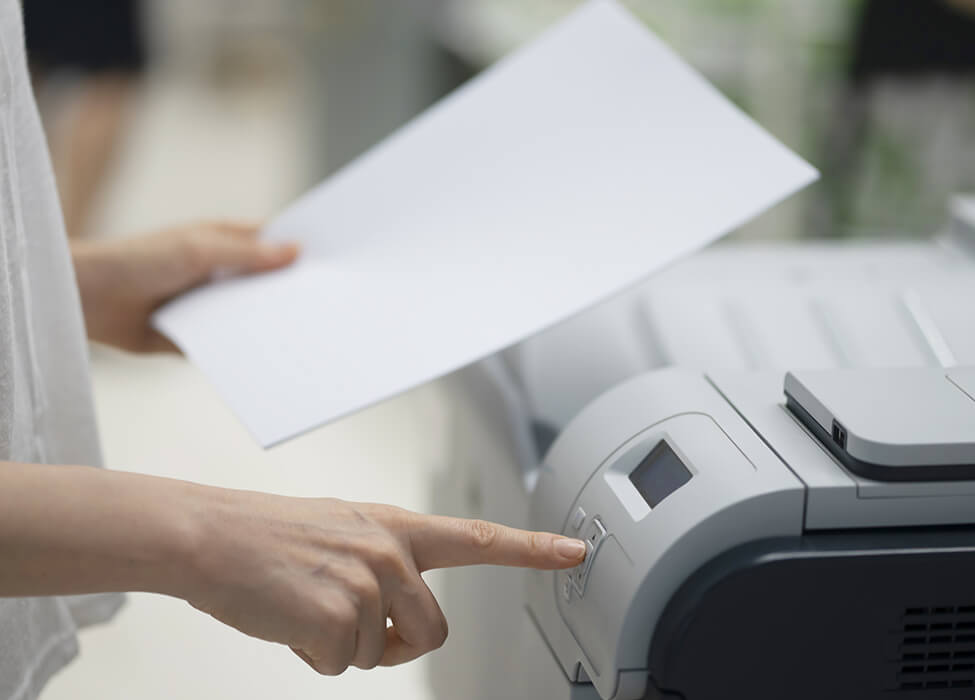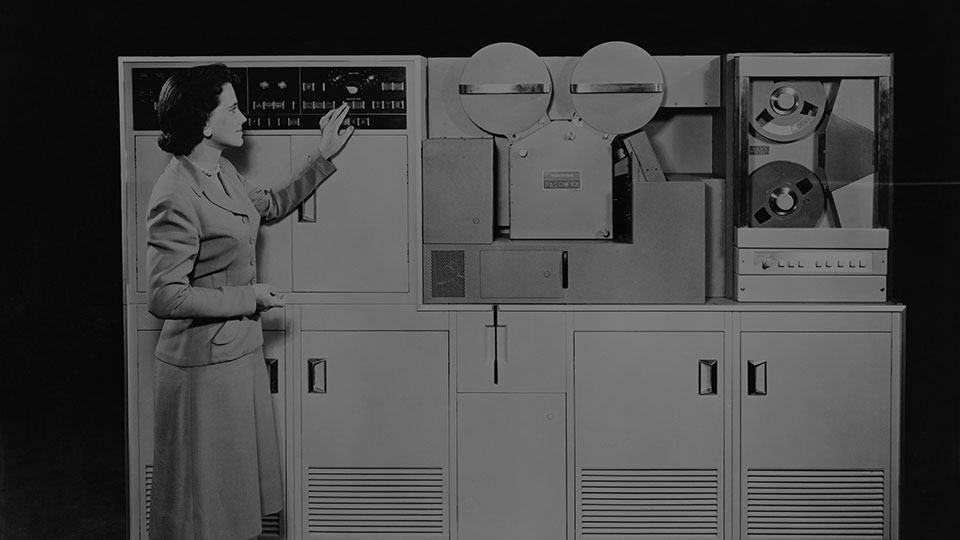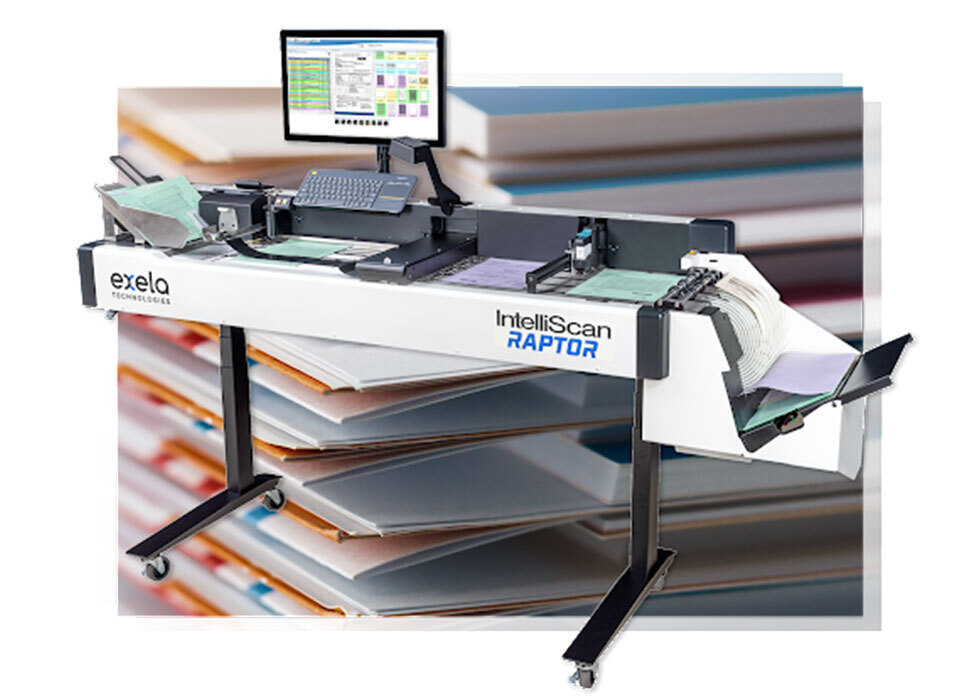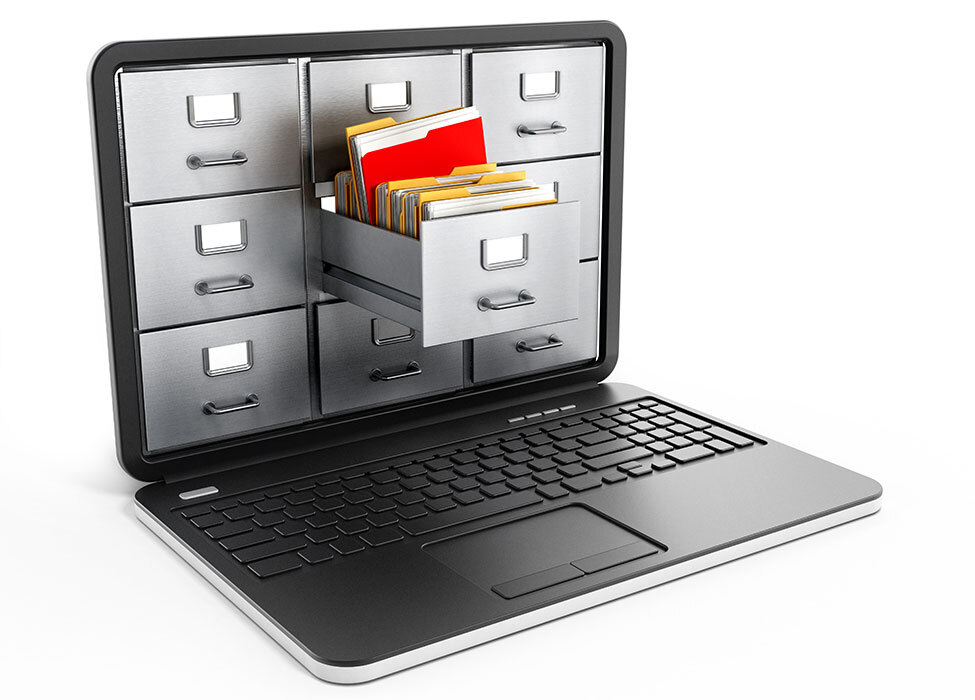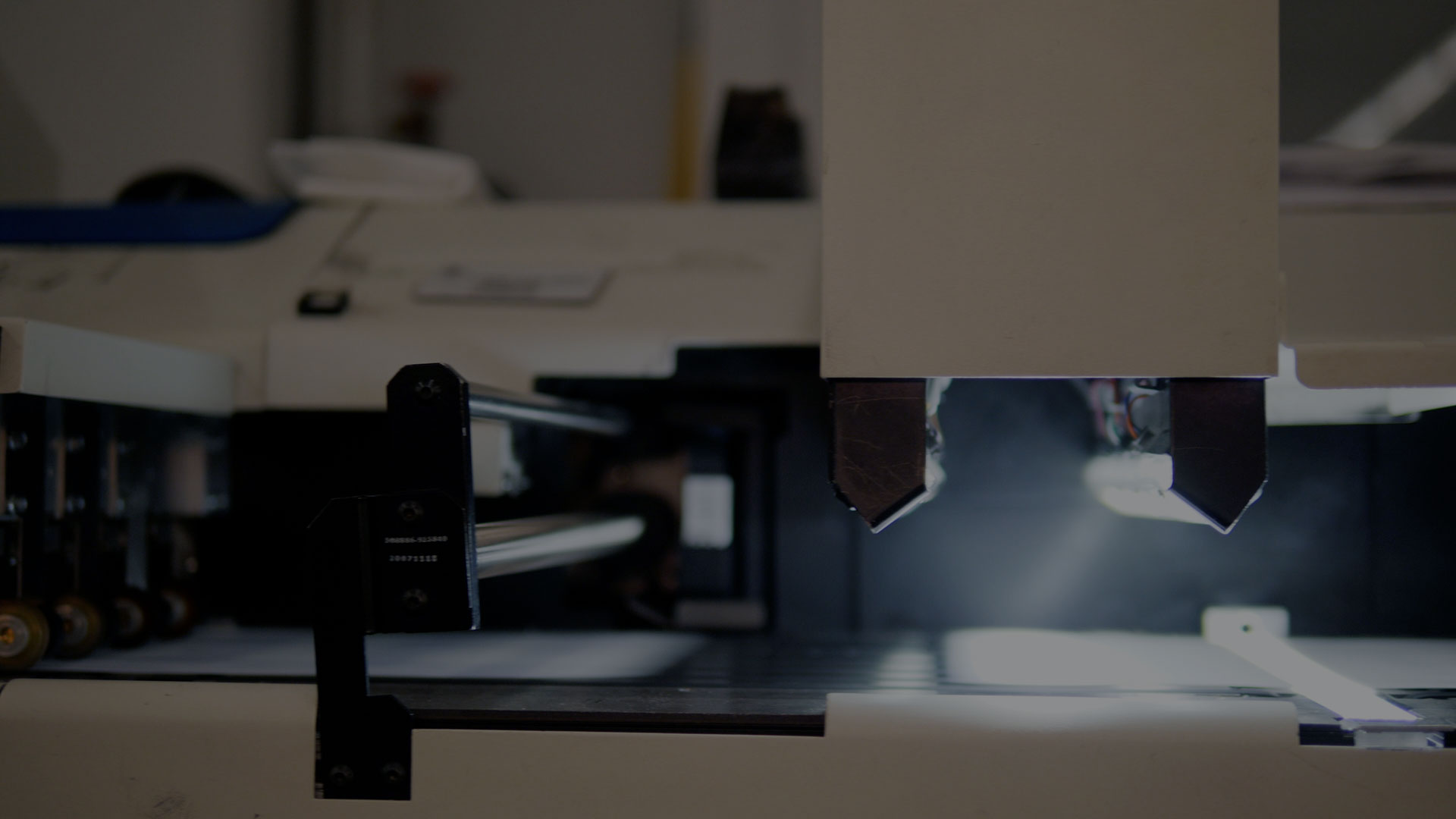It may not come as a surprise to you that the cost of paper is rising. The Bureau of Labor Statistics pointed out that the price of paper rose by 14.2% in the last year. As the cost of paper rises and more companies consider taking steps towards digital transformation, document scanning and paper digitization are looking more and more appealing. The practice of using physical paper is cumbersome, tedious, and unsustainable in today's work climate where many employees work remotely or in a hybrid system.
When the pandemic began and lockdown initiatives took place, companies that already had digital solutions in place experienced a smoother transition when employees began to work remotely. Through digital documents, employees can easily share, access, and store important records. For this reason, it's time for companies to look into document scanning and how to digitize their business records.
Many companies continue to use physical paper documents stored in file cabinets and drawers. The idea of switching to a digital solution may seem costly, daunting, or time-consuming. We’ll be covering the topic of document scanning, answering questions you may have, and hopefully, helping you in your digital transformation efforts.
Why Digitize Documents?
The sole purpose of document scanning is to make the document digital. To see the value of digital documents, we need to cover what the benefits are of digitizing documents.
Easy Accessibility - Digital documents stored on a cloud allow for rapid retrieval and easy access to employees no matter where they're located. Where once employees needed to visit storage to obtain documents or have the documents mailed from a different location, now everything can be accessed through a single cloud. This solution saves time and money on paper and postage.
Chain of Custody - Various cloud systems allow you to see any changes that were made to the documents, when those changes occurred, and even who viewed the documents. Companies can provide employees with various accesses to ensure that confidential files remain confidential.
Simplified Organization - Whereas a storage room requires precise organization and accountability to ensure that no employee returns a document to the wrong location, a cloud offers users the ability to organize their digitized documents in simple folders. Many systems have a search function as well so that employees can easily find any document they’re looking for without having to sift through physical paper documents.
Save on Space - Though small as a single piece, paper en masse takes up a lot of room. Companies may find that they've dedicated several rooms or even a warehouse to store their backlog of records. By scanning documents and uploading them to a cloud, companies can cut down on that space and use it for other purposes or cut it from their costs completely.
Save Money - The cost of paper is one consideration, but the cost of storing paper documents is often overlooked. Storing, printing, copying, and disposing of paper documents can add up to 31 times more than the cost of paper by itself.
Increased Security - Digital files are encrypted and, as we already went over, you can control who has access to which file. This increased security ensures that your documents and records remain safe.
Better Recovery - Thanks to backup systems, files can usually be restored even if they're deleted. Physical paper, on the other hand, is completely lost once it's destroyed. Companies with large backlogs must be particularly careful when removing and returning any documents. Once a physical document is lost, it may be gone for good.
Long-Lasting - Paper doesn't last forever. Guaranteeing that any employee or customer who touches a file keeps it pristine is difficult enough. Time has its own plans and it's not very kind to paper. Paper files eventually begin to show some wear and tear on them. None of this is a concern for digital files that can stay uploaded on the cloud and remain pristine.
Sustainable - As part of companies' green initiatives, many are choosing to move toward a paperless environment. This is a great sustainable step. Document scanning and paper digitization allow companies to save money in various areas and improve file accessibility and sharing while leading the industry in sustainable goals.
How Do I Digitize My Business Documents
Let's say you've decided to move to a more paperless environment but now you're lost on your first steps. According to the Minnesota Pollution Control Agency, the average US worker handles 10,000 papers annually. With all the paper that a company handles on a day-to-day basis, deciding what to do first can be daunting. So let's break it up into two categories: backfile scanning and day-forward scanning.
Backfile scanning refers to scanning historical documents. Companies that have a particularly large backlog may choose to start their document scanning here. It is a great option if you are strapped for space, have a difficult time keeping track of your backlog files, or if employees consistently need information from the backlog but have trouble accessing it.
Day forward scanning refers to documents being scanned as they come into the company. If your company is receiving hundreds or thousands of documents or mail a day, you may choose to start your document scanning process here. This is particularly useful for companies that have employees who work remotely or in different offices, companies that don't have storage space available to store current and future documents, and companies who wish to take steps into a paperless environment asap.
Tips for Starting Document Scanning
Once you decide whether you’ll be moving forward with backfile scanning or day-forward scanning or both, it’s time to start implementing the change.
Gradually Transition
Rather than change everything all at once, it’s a good idea to determine which documents need to be prioritized first. Going paperless can disrupt workflows in the beginning so you need to keep that in mind when first implementing digital documents. Having it be a more gradual process allows you to implement new procedures and workflows into place so that employees know what to expect from this change.
Involve Everyone
Paper digitization affects everyone in the company so it's imperative to receive any feedback from employees and stakeholders to decide how best to move forward. You can also take this time to discover what your employees’ pain points are to help you prioritize which documents need to be scanned and digitized first. This will not only allow employees to have some ownership over the transition, but it will also help them stay engaged as these changes are implemented.
Inspect Document Management
Take a close look at how documents in your company are managed. People may print a document to keep as a reference, because they need a physical record, or so they can have a portable copy of the document.
How are these documents managed? Is there a way to streamline how documents are managed that could cut down on the paper being used? Taking a look at document management will give you a good idea of what needs to be optimized.
Consider Automation
Part of digital transformation is inspecting processes and workflows to determine where digitization would improve efficiency and optimization. This can greatly relate to paper digitization. For example, let's say your company has been using paper invoices, and the accounting team processes everything manually. While it makes sense to digitize the invoices and receipts the company's receiving, it may make more sense to go a step further and automate the AP process. In this case, not only are the documents digitized but many of the repetitive processes are now automated and more efficient.
Buying a Scanner or Outsourcing Document Digitization
Once you’ve determined your company's priorities for document digitization, The next step will be to decide how to actually scan the documents. You have two options here: a scanner and cloud service or a document scanning service provider.
Both of these have their benefits and downfalls and it depends on what your company needs to determine which one is the better option to go for. Purchasing scanners and a cloud service may be a better option if you prefer to do everything in-house with your employees. A scanning provider may be a better option if you have limited resources and a lot of documents. We'll go further into this later.
Document Scanning Equipment
Document scanning equipment can include anything from an app to a commercial scanner. For a small business, a simple multifunction scanner may work and for a large business, it may be worth investing in a high-speed commercial scanner. But we're getting ahead of ourselves.
You have a few options when it comes to selecting document scanning equipment.
Mobile Apps
You can find and download document scanning apps for your phone or tablet. If you have a few papers to scan, this is a good option. It's a very economical choice and offers a simple and quick way to digitize documents.
However, if you have more than a small stack of papers, using an app is going to become tedious very quickly and won’t be as cost-effective in the end. On top of that, the image quality of the document may not be as good as a high-quality resolution you can get from a scanner.
Desktop Scanners
Probably the most common item you think of when you consider document scanning, desktop scanners provide a simple way to digitize paper documents. There are many varieties of desktop scanners that range greatly in price and function.
While this can be a cost-effective option, it may become tedious since it may require an employee to physically scan every document and check the quality of the image. Some scanners can automatically upload it into a cloud system, but others may require manually uploading and organizing each scanned document adding more tedious work.
If you're considering a desktop scanner, you'll want to look at the sizes of paper that the scanner can accept, different color options if color is necessary for your business, the speed of the scanner itself, resolution options, and software capabilities. Also, keep in mind that not all desktop scanners are going to work with all cloud systems.
If you have a small backlog or are receiving a couple dozen or so papers a day, a simple desktop scanner may be right for your business.
Commercial High-Speed Scanner
Commercial high-speed scanners are built for speed, produce high-resolution images, and work with various paper sizes. Businesses that receive various sizes of documents and a lot of documents may benefit from a commercial scanner
If your company has a significant backlog that they need to sort through or they're receiving many paper documents a day, a scanner can help to quickly digitize all of these documents and sort them appropriately.
How to Choose a Document Scanner for Your Business?
Knowing what's right for your business starts with knowing where your priorities are. If you've already completed the steps we listed above to start moving toward a paperless office, you may have already discovered what your document scanning is going to focus on.
The next step is to determine which scanner your company would benefit from. To do this, you need to look into how many documents need to be scanned. This doesn’t have to be an exact number, an estimate will do. You have to determine when you want the documents to be scanned by if it's a backlog.
If you're considering day forward scanning, you need to determine how many documents your company receives daily so you can then calculate different prices for scanners that can accommodate the number of documents you're receiving.
It's also important to consider how many employees can help with the document scanning process. If you have few employees who can dedicate their time to this, a commercial high-speed scanner like the Exela Raptor may be the way to go because it doesn't require multiple employees to use it and is capable of scanning thousands of pages a day.
On the other hand, if your company is currently working on digitizing documents and too many employees are needed to continue the operation, it might be time to upgrade your scanner to a high-speed high-volume scanner. A business process outsourcing (BPO) service provider experienced a reduction in labor costs by up to 50% once they used the Exela XDS5 scanner.
If your company doesn't already have a cloud service, research cloud services that would benefit your company to make file accessibility, sharing, and storing easy. You'll need to include this cloud service in your budget. You will also need to confirm that whatever cloud services you chose are compatible with the scanners you're looking at. Sometimes certain scanners may not work with certain cloud services so be sure that both function well together.
Document Scanning Service Providers
Let's say your company doesn’t have the employees or the space to purchase a scanner and do in-house document scanning or you have too many documents that you want to be digitized as quickly as possible. If that's the case, looking into a document scanning service provider may be a great option for you.
With a document scanning service provider such as Exela, companies can choose whether to have the scanning done in-house or at a different location. Exela’s Document Digitization service can help to digitize an entire backlog or digitize day forward documents.
In some cases, it may be more economical to outsource document scanning than to do it in-house. A document scanning service usually has a service delivery team that works closely with the company to ensure the physical quality and accuracy of the source materials. The team sorts and prepares documents including removing clips, staples, and bindings.
Document scanning service providers will use their own high-speed scanners, and in Exela's case, we use scanners that are capable of processing up to 654 ppm to get the job finished quickly. With Exela’s Document Digitization, the data from the pages are automatically indexed and transferred into the company's content management system so that you can then search and access any document easily.
Having a document scanning service provider take care of documents for your company allows it to continue day-to-day operations without needing to add a new department for scanning or find the space for bulky scanners.
Should You Buy a Scanner or Use a Document Scanning Service?
So now comes the decision of having to purchase a scanner or go with a document scanning service provider. To make this decision, it's important to look at some key factors.
Backfile or Day Forward Scanning
The first factor to look at is your goal for document scanning. Do you plan to scan a backlog or do you plan to go with day forwarding scanning?
You may have a backlog of hundreds of thousands of documents but are only receiving a few documents every day. If this is the case, it may be a good idea to look into outsourcing for scanning your backlog while looking into getting a scanner in the office for the day forward scanning. Each situation will be different so consider what your priorities are.
Number of Documents
Make sure to find an estimate for how many documents need to be scanned whether it's a backlog or day forward. This is a crucial step in determining what solution would work best for your company. While the number of documents fluctuates, you can get a general ballpark figure to determine the next step for your company. If your company has a massive amount of records to digitize, outsourcing may be the better option.
Security Measures
Some companies prefer to do everything in-house so they have complete control over the security of their document scanning. While many document scanning services offer high security and compliance, some companies still prefer to scan in-house. If stakeholders prioritize security and would prefer everything done in-house, a scanner would be better than outsourcing. This will give the company full control over the entire document scanning process.
Number of Employees
How many employees do you currently have or would you need to hire to complete your paper digitization goals? In some cases, it may be a more economical option to purchase a scanner if you already have employees in place able to scan documents. However, if you have a ton of documents that need to be scanned and limited resources, it may be more economical to outsource.
Deadline
This is always a tricky factor to consider which is why we’re putting it last. With so many employees working remotely, there may be a deadline as to when leadership wants to get a digital solution in place. So the priority may become digitizing documents as quickly as possible.
You may have multiple employees ready to scan, but without high-speed scanners, you may miss the deadline. Consider the speed you require and whether or not outsourcing or purchasing high-speed scanners would be more efficient and cost-effective.
Once all these factors are considered, you'll get a better idea of exactly what your company needs and whether a scanner or outsourcing would be better for your company. Each company is different and its needs vary widely so it's important to determine what exactly your company's needs are. For some, it may be a smarter choice to purchase a commercial scanner while for others it may be a better choice to outsource the entire document scanning process.
Final Thoughts on Document Scanning
As more companies move toward a paperless office, there are many factors to consider when it comes to document scanning and digitizing records. However, we hope we outlined enough for you in this guide that you can make an informed decision about the next steps for your company in terms of document scanning. Digitized documents offer many benefits in today's work environment with companies that have employees working across the globe and collaborating.
Business process outsourcing and business process automation providers such as Exela can help companies to take the next step forward in their digital transformation process. So it's time to look toward the future and digital solutions as we say goodbye to paper.






